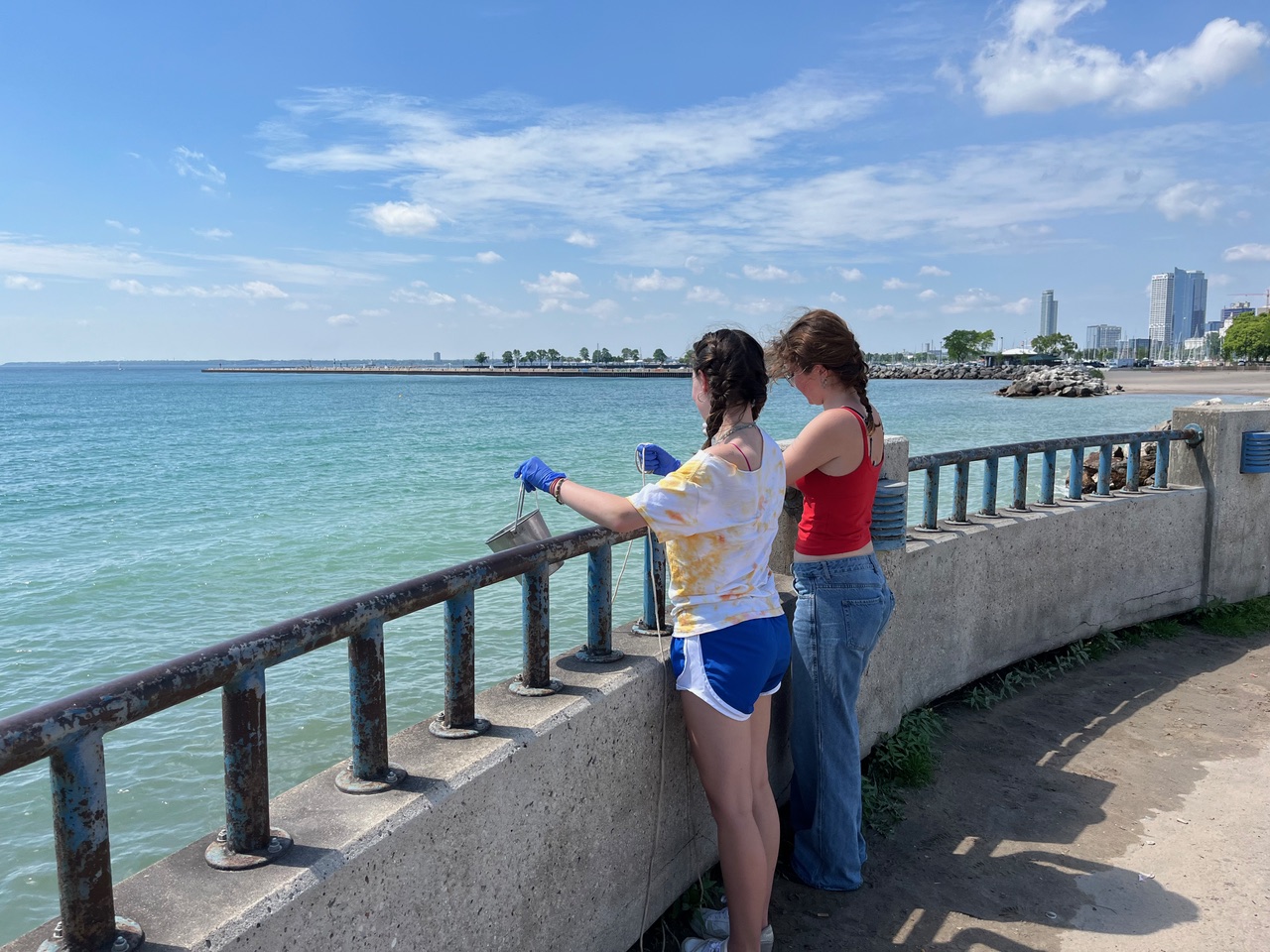Steve Humblet was just trolling along in the waters of Lake Superior near Long Point when it happened.
“Both of my new electric downriggers and poles started swaying,” Humblet recalled. “I pretty quickly realized I didn’t have a big fish, but I didn’t know what the heck I had hit. I fought with it for half an hour.”
What he had hit was a ghost net—a gill net that had torn loose from its moorings and eventually drifted into the path of Humblet’s motor, fouling it badly. Gill nets are used by commercial and tribal fishermen for larger hauls.
“At first, I was mad at myself for running through a net,” said Humblet, who thought he had somehow missed some warning floats. “And then I took a closer look.”
What he saw was a line of floats on the surface extending out nearly 300 feet, with the rest of the net wrapped around his downrigger, with lots of bait and debris still stuck in it. He realized he hadn’t run into the net; the net had run into him.
Luckily, Humblet had heard about an educational video co-produced in 2015 by Wisconsin Sea Grant, the Apostle Island Sportsfishermen’s Association (AISA) and the Great Lakes Indian Fish and Wildlife Commission (GLIFWC), instructing boaters on what to do if their vessel became entangled in a ghost net. He contacted the Coast Guard and a friend in the AISA. About an hour later, he had extricated his boat, losing only the cannonball and flasher from his downrigger in the process.
Humblet’s story is the textbook example of how the ghost net education and outreach campaign, fueled by a NOAA Marine Debris Outreach and Education Grant, is supposed to work. And it points up the need for continued outreach: Since the project began, it’s estimated that at least 5,000 feet of ghost net has been removed from the waters of Lake Superior alone.
Luckily, that education and outreach will continue. The current grant has been extended through April 2017 and will fund another educational workshop for boaters and anglers and outreach at the Upper Peninsula Sport Show, as well as the development of a second educational video, this one aimed at the groups that set the gill nets, detailing the proper methods to ensure that the net doesn’t become unmoored during installation, and that it doesn’t break apart and drift away as it’s being removed from the water.
The bigger and better news is that the partnership has been awarded a 2017 NOAA Marine Debris Removal Grant to continue the campaign.
“It’s interesting—we’ve come full circle,” said Titus Seilheimer, Wisconsin Sea Grant’s fisheries outreach specialist and a lead on the project. “A lot of what we had prepared initially when we first began talking about doing this project is coming back in the scope of this second grant.”
Specifically, the new grant will fund the development of a net-marking kit that anglers can carry to make identifying, marking and reporting ghost nets to the proper authorities easier and more accurate. As part of the grant, GLFWC will also receive high-resolution sonar equipment and underwater optics that will help locate ghost nets once they’ve been reported. Funding will also be provided to the Wisconsin DNR to cover expenses related to ghost net removal.
“That’s a vital piece of this,” said Seilheimer. “They can go right to the location and pull it out.”
To view the video “Avoid the Trap: What Anglers Should Know about Commercial Fishing Nets,” visit https://youtu.be/8OKxHK0JfxY.





